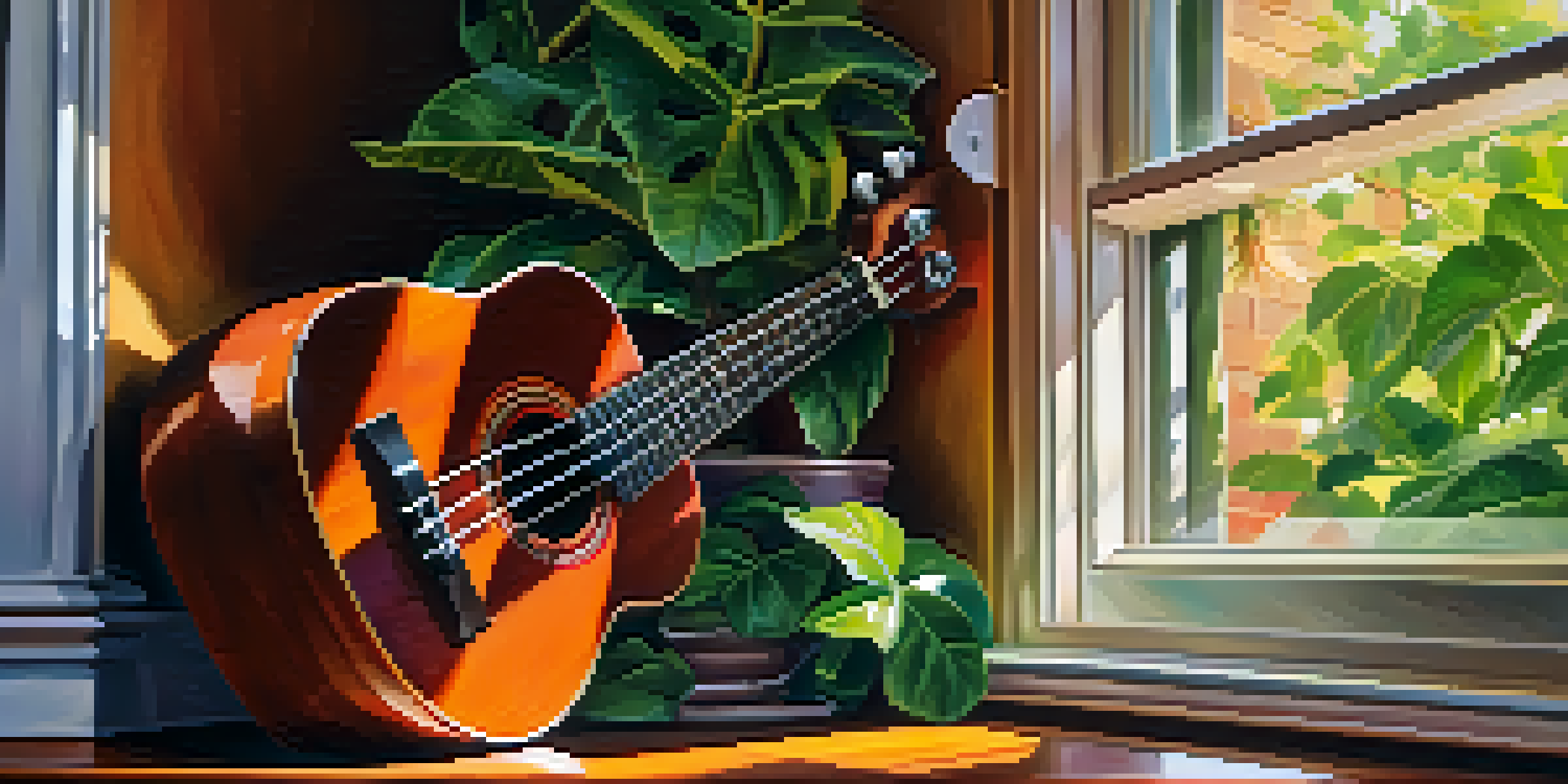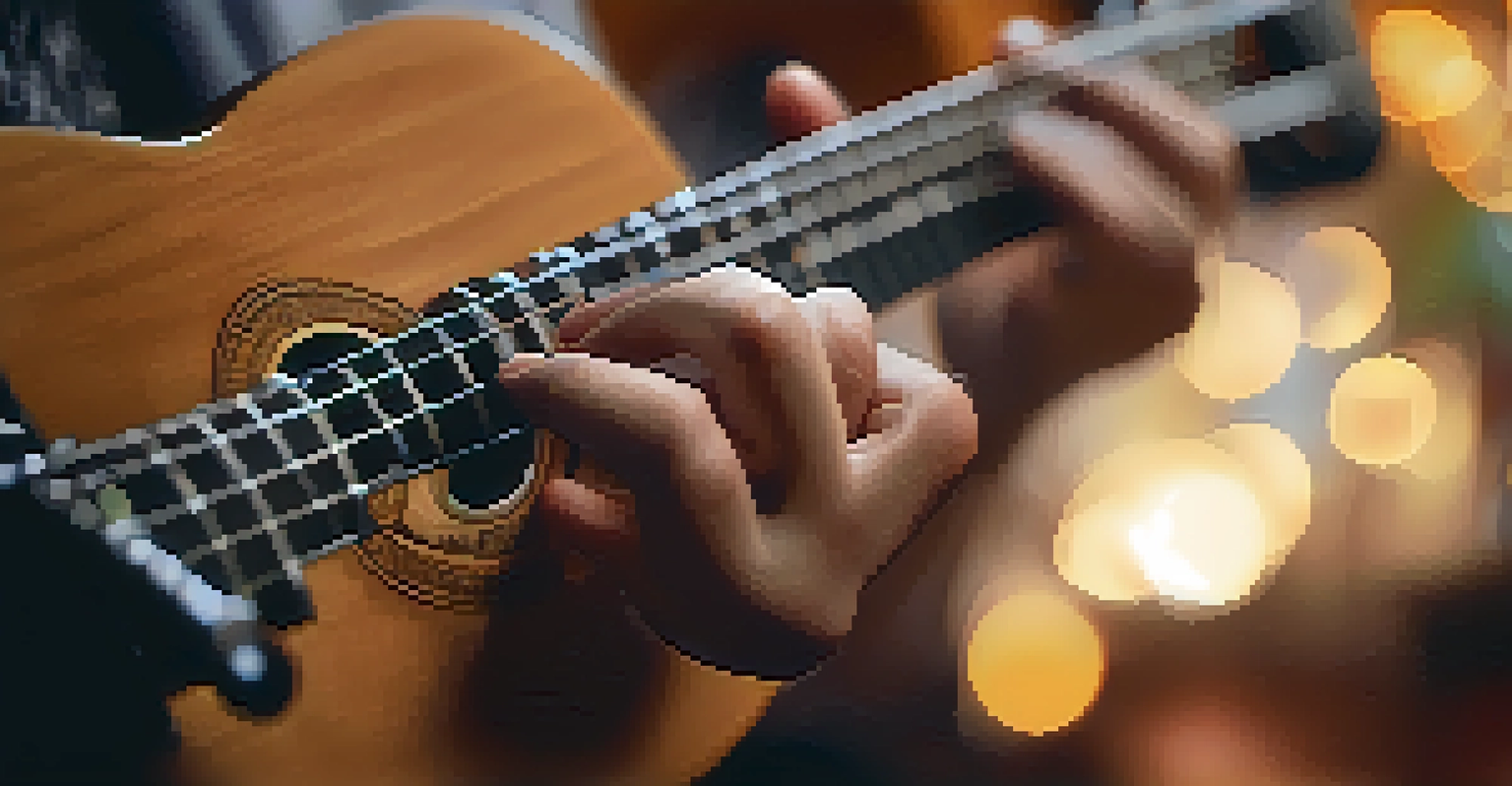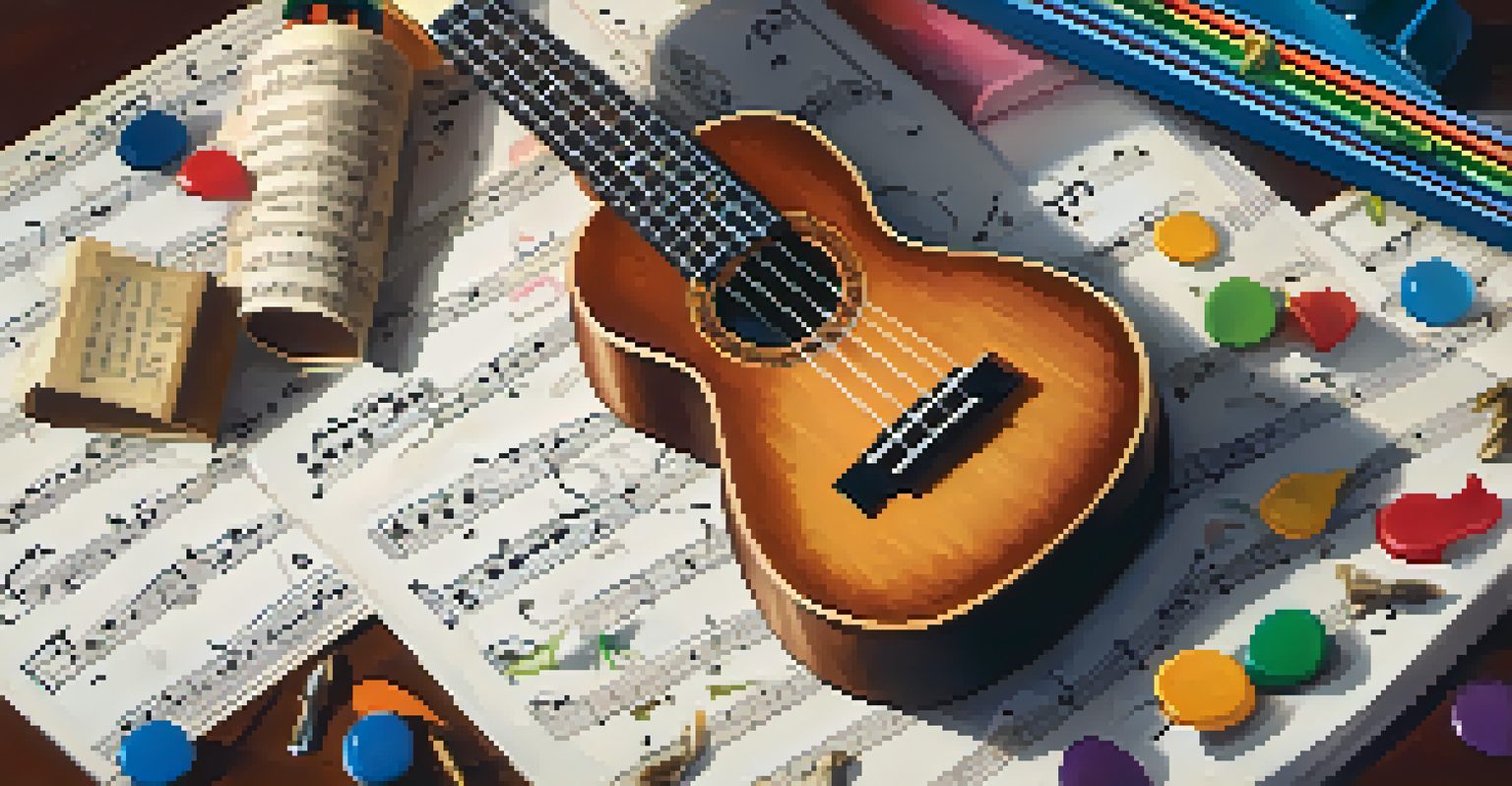The Impact of Capos on Ukulele Tuning and Pitch Changes

Understanding Capos: What They Are and How They Work
A capo is a simple yet powerful tool that clamps down on the strings of a guitar or ukulele, effectively shortening their length. This action raises the pitch of the instrument, allowing musicians to play in different keys without changing their finger positions. Think of a capo as a way to 'cheat' your way into higher notes while maintaining the same chord shapes you know and love.
The guitar is a miniature orchestra in itself.
For ukulele players, capos can open up a world of creative possibilities. Instead of needing to learn new chord shapes or fingerings for different keys, you can simply place a capo on the desired fret. This ease of use makes capos a favorite among beginners and seasoned players alike, enabling quick transitions between songs in various keys.
Moreover, the capo allows for a richer sound by letting musicians explore alternate voicings and harmonies. Utilizing a capo can breathe new life into your playing, encouraging you to experiment with your favorite songs in fresh ways or even compose original pieces.
How Capos Affect Ukulele Tuning
When you place a capo on your ukulele, it changes the tuning of the strings by effectively raising their pitch. For instance, if you place a capo on the second fret, every string will sound a whole step higher than it would without the capo. This makes it essential for players to understand how these adjustments impact their overall sound and tuning.

It's crucial to remember that while a capo helps with pitch, it can also create some unique challenges. If the capo is not positioned correctly or is of poor quality, it may cause buzzing or intonation issues, leading to a less than pleasant sound. Therefore, choosing a good capo and ensuring it’s placed correctly is key to maintaining the integrity of your ukulele’s tuning.
Capos Simplify Key Changes
Using a capo allows musicians to easily change keys without altering chord shapes, making it accessible for all skill levels.
Additionally, different types of capos can affect the tuning in various ways. For example, a trigger capo might apply uneven pressure, while a nylon strap capo might allow for a more gentle grip. Understanding these nuances can help you select the right capo for your playing style.
Exploring Pitch Changes with Capos
Using a capo can create significant pitch changes, transforming the way songs are performed. Every fret you move up with a capo raises the pitch by a half step, allowing for a wide range of tonal possibilities. This is particularly beneficial when trying to match a vocalist's range or exploring different sound textures.
Music is the shorthand of emotion.
For example, if you're playing a song that sounds great in the key of C, but your vocalist prefers D, simply placing a capo on the second fret allows you to maintain the same chord shapes while adjusting to the new key seamlessly. This flexibility can make rehearsing and performing much smoother.
Moreover, the ability to change pitch easily with a capo encourages creativity. Musicians can experiment with different keys and arrangements, leading to unique interpretations of familiar songs. This can inspire new ideas and help you discover your own style.
Capos and Strumming Patterns: A Harmonious Duo
When using a capo, it's essential to consider how it influences your strumming patterns. Since the capo changes the pitch, you may find that certain strumming styles resonate better in different keys. This can lead to exciting variations in rhythm and feel, providing a fresh take on songs you’ve played countless times.
As you experiment with your capo, pay attention to how your strumming interacts with the new pitch. You might discover that lighter strumming works better in higher keys, while heavier strumming might suit lower keys. This exploration can enhance your playing and keep your audience engaged.
Capos Enhance Creative Possibilities
Capos enable players to explore different voicings and arrangements, encouraging unique interpretations of familiar songs.
In essence, the combination of capo placement and strumming dynamics can create a rich tapestry of sound. By marrying these elements, ukulele players can craft performances that captivate listeners and showcase their musicality.
Capos for Beginners: A Helpful Tool for Learning
For those just starting their ukulele journey, capos can be a game changer. They simplify the process of learning new songs by allowing beginners to focus on chord shapes rather than getting bogged down in the complexities of music theory and transposition. This can make practicing feel less daunting and more enjoyable.
Additionally, capos can help beginners play along with others more easily. If a friend or teacher plays in a different key, a quick capo adjustment can make it possible to join in the fun without feeling lost. This sense of camaraderie can boost confidence and motivate new players to keep practicing.
Moreover, using a capo encourages beginners to develop their ear for music as they listen for pitch changes and learn to adapt. Over time, this can deepen their understanding of music and help them grow into well-rounded musicians.
The Versatility of Capos: Styles and Genres
Capos are not just tools for changing pitch; they also play a significant role in various musical styles and genres. From folk to rock and pop, many musicians utilize capos to achieve the desired sound for their songs. This versatility makes them an essential accessory for any ukulele player looking to explore different genres.
For instance, in folk music, capos are often used to create bright, ringing tones that are characteristic of the genre. In contrast, rock musicians may use capos to access higher chords and create a more dynamic sound. Understanding how different styles utilize capos can help players tailor their approach to suit their musical preferences.
Proper Capo Use Maintains Quality
Correctly applying and maintaining a capo protects the ukulele’s strings and fretboard, ensuring a pleasant sound and longevity.
Ultimately, the ability to switch keys and experiment with sound makes capos a beloved tool across genres. Embracing this versatility can lead to exciting musical discoveries and broaden a player's repertoire.
Maintaining Your Ukulele with a Capo: Best Practices
While capos are fantastic tools for musicians, it's essential to use them responsibly to maintain your ukulele’s health. Ensuring the capo is applied evenly and not too tightly can prevent damage to the instrument. A gentle touch is crucial to preserving the integrity of your strings and fretboard.
Regularly checking your capo for wear and tear is also important. A worn-out capo can lead to inconsistent pressure on the strings, resulting in tuning issues. Investing in a high-quality capo can save you from potential headaches and keep your ukulele sounding its best.

Lastly, when switching between songs, it’s good practice to remove the capo during breaks or between songs. This allows the strings to relax and maintain their tuning, ensuring that your ukulele stays in top shape for every performance.